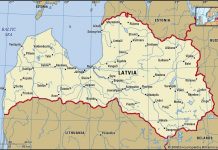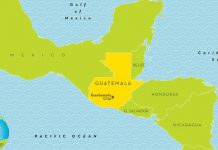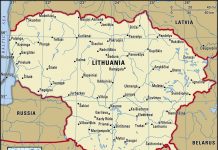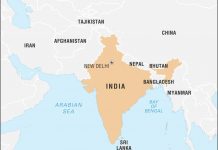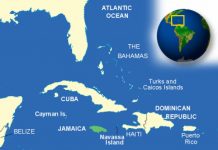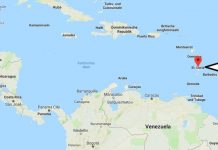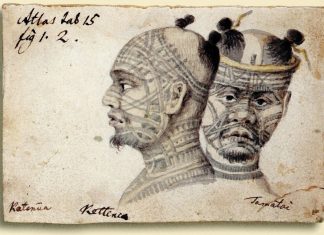Kingdom of Cambodia
Capital: Phnom Penh
Area: 181,035 sq. km/69,898 sq. miles
Population: 10,600,000
Population density per 1 sq. km / per 1 sq. mile: 59 /(152)
Ethnic composition
Khmers make up 81% of the population, Vietnamese 4%, and Chinese 3%. The official language is Khmer, but French is also widely spoken.
Religion
The traditional religion is Buddhism, it is practiced by 90% of the population. All religious activities were banned in 1975, but Buddhism was restored as a national religion after the amendment of the Constitution in April 1989. Now there are more than 20,000 Buddhist priests (bonzes), as in 1975, and 2,800 monasteries. Before the communist coup (in 1975), 1.4% of the population, mainly Malays (Polynesian residents who speak the Tam language), professed Islam.
This religion was also banned in 1975, but re-legalized in 1989. There are also 14,000 adherents of the Roman Catholic Church among the population.
History
Предыстория «красных кхмеров»
Initially, Cambodia was part of the kingdom of Funan, until it was conquered by the Khmer in the VI century, after which it became the center of a highly developed and extensive Khmer Empire from the VI to the XV century. with its capital in Angora in northwestern Cambodia. The region was subsequently under the jurisdiction of neighboring states – Siam (Thailand) and Champa (Vietnam), but still retained some independence. In 1863, France imposed a protectorate treaty on the Kingdom of Cambodia, but the traditional political and social structures of the kingdom were practically not affected.
Since 1887 Cambodia joined the French Indochina Union, and during the Second World War it was captured by Japan. But France regained control over the Kingdom of Cambodia and proclaimed a Constitution on the basis of which a modern parliamentary system was established. However, the rise of the liberation movement forced the French Union to grant the country partial autonomy in November 1949, and then full independence in November 1953. Prince Norodom Sihanouk (1922), who was elected king in 1941, relinquished power in favor of his parents in March 1955, becoming Prime Minister and leader of the People’s Socialist Social Movement, which enjoyed continued success in the elections and won all possible seats in the parliamentary elections in 1955, 1958, 1962 and 1966 gt. And in June 1960, after the death of his father, Sihanouk was elected head of state.
During the Vietnam War (1954-1975), Sihanouk, although extremely critical of the invasion of US military forces into Indochina, tried to maintain Cambodia’s neutrality in the unfolding conflict. In the late 60s, the task became much more complicated. Internally, the Sihanouk regime faced the rise of the communist Khmer Rouge movement.
During the economic crisis, in March 1970, Sihanouk’s government was overthrown during his stay abroad by a bloodless right-wing coup led by a pro-American prime minister, Lieutenant General, and later Marshal, Lon Nol. Sihanouk remained as Prime Minister from 1971 to 1972, after which he became president of the so-called Khmer Republic, which emerged in October 1970. The political system was recreated on presidential executive structures, after the promulgation in April 1972. A Constitution modeled on the Constitution of the Fifth Republic of France (Charles de Gaulle). Opposition arose against the regime of Lon Nol, led by the exiled Prince Sihanouk, who was the leader of the Royal Government of the National Union of Cambodia based in Beijing, as well as the Communist Party of the Khmer Rouge, supported by North Vietnam and China. These two forces joined together to form the National United Front of Cambodia.
A fierce civil war was in full swing and, despite receiving substantial military assistance from the United States of America, Lon Nol’s government lost control over rural and then urban areas and was overthrown in April 1975. The country was renamed Kampuchea, and Prince Sihanouk was appointed head of state.
The Khmer Rouge Party has embarked on Mao Zedong’s ruthless extremist communist program, which includes the abolition of money and markets, forced relocation of the urban population to rural areas, agricultural collectivization, and in the shortest possible time. It ended with the death of 1-3 million people from hunger, disease and unbearable conditions. “Reactionary” political opponents were executed. In January 1976 A new Constitution was proclaimed, according to which the state was renamed Democratic Kampuchea, and the ousted Prince Sihanouk appointed Khye Samphan, the former prime minister, as president and put the CPC with the famous guerrilla leader Pol Pot at the head of state policy.
The new regime of the Khmer Rouge led to the severance of all contacts with Western countries and the development of close ties with China. As a result, ties with former allies Vietnam and the Soviet Union were destroyed, prompting Vietnam to launch a policy of conquest against Cambodia in 1977-1978, which led to the final invasion in December 1978. In January 1979 The Vietnamese successfully overthrew Pol Pot’s government, which was not very popular among the population, and created a pro-Vietnamese puppet government led by Heng Samrin, commander-in-chief of the fourth Khmer Rouge unit, which operated until 1978. From that moment he became the head of the Kampuchea National United Front for National Salvation (KNOFNS), created in December 1978. and later renamed the NRPC in 1981 . It was an association of Kampuchea communists who formed the opposition to Pol Pot’s government. A new People’s Republic of Kampuchea was declared.
Initially, Heng Samrin ruled as the president of the Extraordinary People’s Revolutionary Council, jointly with the General Secretary of the CPC (later the NPC) Pan Sovan-nom – Khmer, who lived in Vietnam from 1954 to 1979. In December 1981 Peng Sovann, who was considered in Vietnam to be a supporter of gradual transformations, pro-Soviet views and a despotic manner of governance, was deprived of all state and party posts, and Heng Samrin became the new leader of the NPRP and sole ruler. A Constitution was created and a National Assembly was established in an attempt to legitimize the regime.
During the first year of Heng Samrin’s rule, he faced fierce guerrilla resistance under the leadership of Pol Pot, whose main forces were concentrated in the jungles in the west of the country near the border with Thailand, as a result of which more than 300,000 Cambodians fled and organized refugee camps on the border with Thailand. This resistance movement expanded in June 1982 with the formation in Malaysia, in Kuala Lumpur, of a broad anti-Vietnamese coalition and the Democratic Government of Kampuchea in exile. It included Prince Sihanouk, who lived in exile in North Korea, as president, Khye Sam-fan, the political leader of the Khmer Rouge, as vice president, and Song San, the former premier and current leader of the anti-communist Khmer People’s National Liberation Front, as prime minister. The coalition received appropriate support from the countries of Southeast Asia – Indonesia, Malaysia, the Philippines, Singapore and Thailand, as well as China — and was officially recognized by the United States of America and the United Nations as the legitimate Government of the country. But militarily, the coalition was weak. Her troops numbered 60,000 men, 60% of whom were Khmer Rouge, Heng Samrin’s troops outnumbered them and numbered 170,000, and her main camps were constantly devastated by the enemy during the annual dry seasons in December and April. This war cost Vietnam more than 30,000 soldiers’ lives.
The government of Heng Samrin initially pursued a liberal policy opposed to the communist policy of the Khmer Rouge, and even tried to soften attitudes towards the Buddhist religion in order to secure support among the population. Soon, however, the policy was completely changed, the communes were restored, and the “Vietnamization” of the country began with even greater force, as a result of which more than 500,000 Vietnamese emigrated to the southeast of Cambodia. Since 1985, after Hun Sen assumed the post of prime minister, and also under pressure from the new reformist government of Mikhail Gorbachev in the Soviet Union, a more flexible and pragmatic approach to politics and economics was adopted, the local Khmer population entered the framework of the regime — and the cultural revival of the Khmer became possible. Hopes for a political settlement of the Kampuchea problem began to be realized in 1985, which was largely facilitated by Pol Pot’s formal resignation from the post of military leader of the Khmer Rouge in August 1985. (although at the same time he remained an influential figure in politics), and the phased withdrawal of Vietnamese troops. In December 1987— January 1988, the reconciliation process moved one step further when Hun Sen and Prince Norodom Sihanouk met for a series of talks on the outskirts of Paris. These events were followed in 1988 by the withdrawal of the remaining Vietnamese troops – 50,000 people, including the high command, from Cambodia. The remaining troops were withdrawn in September 1989 . For two years, difficult negotiations were conducted between the Kampuchea government and the opposition coalition. The main concessions were made by the government of Heng Samrin and included a promise to liberalize the economy, restore the status of Buddhism as the state religion and change the official name to the ideologically neutral Kingdom of Cambodia.



















